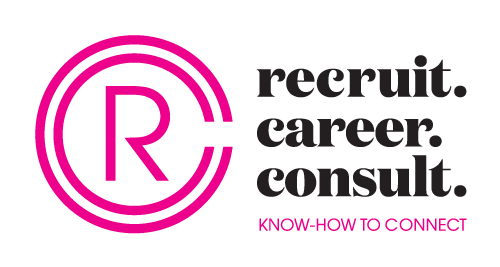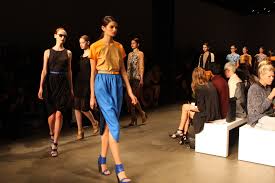Australia is attractive, and from high end luxury, to mainstream, to homewares, and to big box retailers, the influx of international retailers into the country looks like it will continue.
Article from Sydney Morning Herald:
The march of the international retailers into Australia has been a characteristic of the sector for a while, but that’s nothing to what is slated to arrive in the coming years, according to agents.
The landscape has undergone significant change, triggered by the new property development that has created the appropriate flagship sites in Pitt Street Mall, Sydney and Bourke Street Mall and surrounds in Melbourne.
But with the evolution of departments stores to smaller footprints, the floodgates are opening for the second and third tiers of overseas names that will occupy this excess area.
Michael Bate, head of retail at Colliers International, said Australia’s retail industry has been heavily concentrated and characterised by fierce competition between a few established players.
Advertisement
“Our industry is undergoing an unprecedented period of disruption, as these established players have been forced to evolve in order to meet the changing demands of the consumer and revive profitability,” Mr Bate said.
“These changes are opening up new opportunities for the many emerging brands in Australia, who are looking to gain a foothold in an established and well-heeled market.”
New brands that will look to Australia will range from the luxury end to fast fashion and homewares and all in between.
Alexander McQueen, Balenciaga, Boucheron, Brioni, Celine, Chloe, Chopard, Dolce & Gabbana, Donna Karan, Dunhill, Emilio Pucci, Fendi and Givenchy will look for sites across the country.
Jewellers are already here including Cartier, Van Cleef & Arpels, Piaget, Panerai, with Harry Winston, Saint Laurent, Alexander McQueen, Valentino, BCBG Max Azria and Dolce & Gabbana also said to be looking.
Semi-luxury goods, such as Massimo Dutti by Zara, Banana Republic by GAP, Agent Provocateur, Victoria’s Secret and Tory Burch (potentially by the Valiram Group, which also has the Michael Kors brand) will also make their way over.
Not to be left out, and depending on sites they can lease, will likely be Marks & Spencer, Harvey Nichols, Hamleys Toys, Legoland, Eataly, Dean & Deluca and Debenhams, which is coming through a deal with Harris Scarfe.
Alex Alamsyah, senior director retail leasing at Knight Frank Australia, said international retailers are likely to continue to have a major bearing on the Sydney CBD retail market for the foreseeable future.
“With domestic expansion prospects in Europe and North America becoming increasingly limited, the overall attractiveness of the Australian retail market is favourable for international retailers. Australia is supported by a resilient local economy and high discretionary spending.”
Looking ahead, the continued rollout of apparel and footwear retailers is expected to persist, following in the footsteps of H&M and Zara who continue to increase their presence across the country.
“However, for the Sydney CBD, the next two to three years is likely to be characterised by the influx of luxury retailers, driven by the low Australian dollar and increase in Asian tourism,” said Mr Alamsyah.
Melbourne’s expansion continues unabated as the big names roll out a national presence.
Knight Frank’s director of retail leasing for Melbourne, Gary Loo, said while the CBD retail core recorded a rise in vacancy over the past year, the growing residential population and number of CBD-based workers continues to drive demand.
“Clothing and food retailers account for the majority – 57 per cent – of occupied CBD core retail shops in Melbourne. An influx of international retailers, and lured by Australia’s stable economy, has increased the total number of international retailers in the Melbourne CBD retail core to 119 up from 65 traders five years ago,” Mr Loo said.
“Luxury retailers such as Longchamp and Christian Louboutin have both opened stores at the Paris End of Collins Street – two notable additions to Melbourne’s prime core CBD retail market this year.”
According to Mr Loo, prominent international retailers seeking prime CBD Melbourne street front exposure include Apple, J.Crew and Brooks Brothers.
Amid the fashion and eateries there is also the booming housing market, which has provided the same hot market conditions for retailers with sales of household goods from new televisions to sofas blitzing the competition.
Veteran retailer Gerry Harvey has dismissed concerns about consumer sentiment, saying the strongest sales growth in Harvey Norman’s stores for more than seven years is proof that shoppers are confident and willing to spend.
“Consumer confidence at the moment is not subdued, it’s the highest it’s been for seven or eight years – that’s evidenced by the sales in our stores,” Mr Harvey told Fairfax Media
Same-store sales in Harvey Norman’s Australian stores jumped 7.1 per cent in the September quarter – the strongest growth since the global financial crisis – lifting pre-tax earnings by 27.8 per cent to $91.8 million.
Mr Bate said unsurprisingly sales data shows a correlation between dwelling price and retail sales growth, with NSW and Victoria remaining above average, recording year-on-year retail sales growth rates of 4.14 per cent and 4.82 per cent respectively.
To take advantage of the demand for home furnishings, the overseas heavyweights of Zara and H&M, the two biggest fast fashion chains in the world, are offering homewares in their new stores.
Sweden’s H&M opened with fanfare in Sydney last month and has dedicated prime floor space to homewares. Not to be outdone, Zara home is opening next door to H&M along the strip in coming months.
Supermarkets and food sales are also very strong, although competition is fierce among the existing players and the new entrants. As a result, consumers are benefiting from price wars and almost hourly specials.
According to the latest retail research from Colliers International’s Game On: Retail’s new entrants flex muscle as competition grows, the two retail segments which have undergone significant disruption are the supermarket and department store sectors.
Source: Sydney Morning Herald: http://www.smh.com.au/business/property/influx-of-international-retailers-shaking-up-retail-sector-shows-no-signs-of-abating-20151117-gl0ws5.html


2 comments
Great looking site. Think you did a great deal of your very own coding.|
http://www.HpApci8Ey6.com/HpApci8Ey6
Thanks so much – we appreciate your feedback